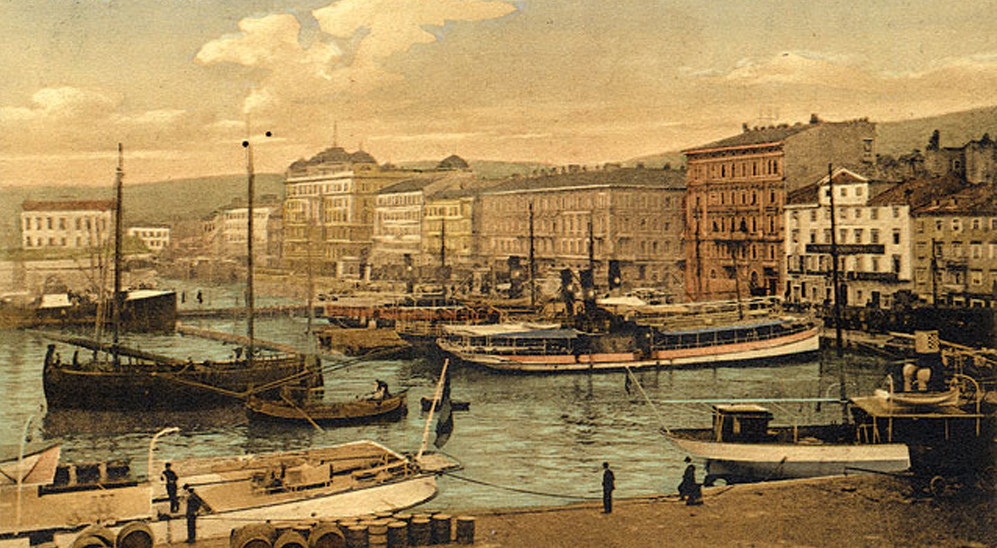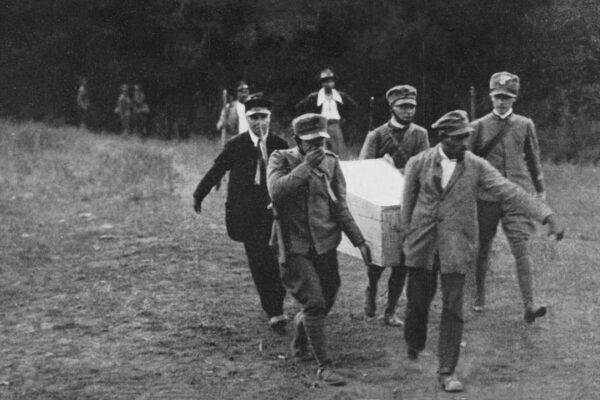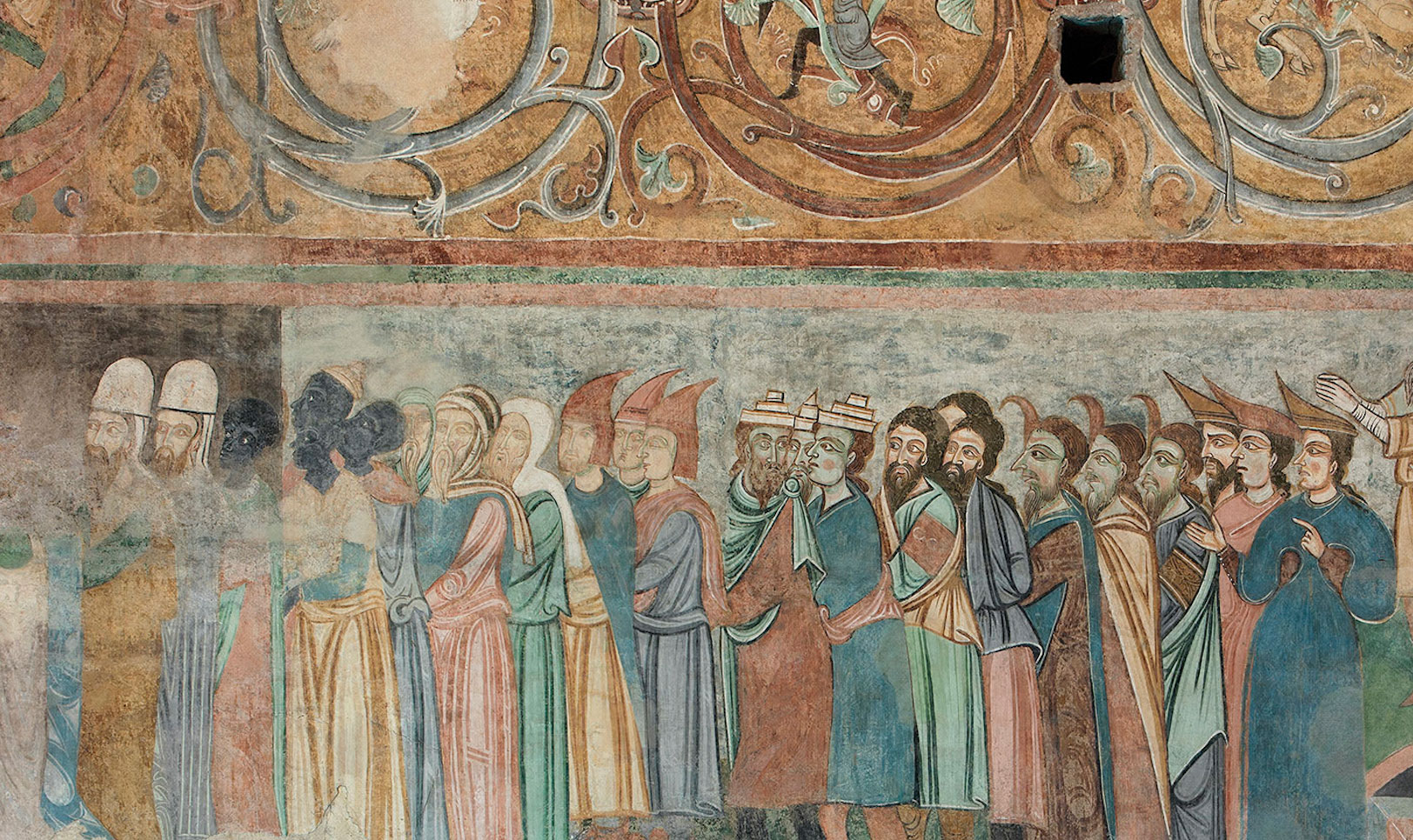Book: The Jews and the Nation-States of Southeastern Europe from the 19th Century to the Great Depression. Combining Viewpoints on a Controversial Story. Editors: Tullia Catalan, Marco Dogo, Cambridge Scholars Publishing, 2016
Tullia Catalan is Assistant Professor at the University of Trieste, where she lectures on Modern and Contemporary Jewish History. Her research focuses on the history of the Jewish communities in Italy and their relationships with the majority society during the 19th and 20th centuries. She is a member of the editorial board of Quest: Issues in Contemporary Jewish History and a scientific member of Centro di Documentazione Ebraica Contemporanea di Milano. Her recent publications include “The Ambivalence of a Port-City: The Jews of Trieste from the 19th to the 20th Century” in Quest. Issues in Contemporary Jewish History 2 (2011); “Italian Jews and the 1848–49 Revolutions: Patriotism and Multiple Identities” in The Risorgimento Revisited: Nationalism and Culture in Nineteenth-Century Italy (2012); and “Les Juifs italiens et le Risorgimento: un regard historiographique” in Revue d’Histoire du XIXe siècle 44 (2012).
Marco Dogo was Professor (now retired) of the History of Eastern Europe at the University of Trieste. He has also previously served as Director of DIAnet International School, Trieste. His fields of research include migrant groups between the Balkans and the Adriatic, their traditional identities and their role in Mediterranean trade, and modernization processes in the nation-states of Southeastern Europe. His publications include Disrupting and reshaping: Early stages of nation-building in the Balkans (2002); Città dei Balcani, città d’Europa. Studi sullo sviluppo urbano delle capitali post-ottomane 1830–1923 (2008); and “War, colonization and trade in the Danube basin in the modern era: some sustainability-related issues” in DIAnet Int. School Proceedings 2015.
From the Introduction
Southeastern Europe is not, in this volume, a geographical term. It is rather that part of Europe, surrounded by empires and itself an heir to empires, that in the nineteenth and twentieth centuries was being organized into nation-states. This meant the small Balkan monarchies which succeeded the Ottoman Empire, of course, but also the great kingdom of Hungary, whose Magyar identity was strengthened at the expense of Habsburg constraints; and the small kingdom of Croatia, whose elites in turn resented Hungarian restrictions. In that part of Europe, historical development had produced two typical structures of social and political organization: on the one hand, nation-states under nobiliary hegemony (Hungary, Romania), in which a privileged class of landowners had survived through the centuries and was now renewing its power in the forms of liberalism and of census suffrage; on the other, peasant nation- states (Serbia, Bulgaria), whose indigenous aristocracies had been destroyed centuries before, while new elites were now emerging through democratic/demagogic competition and universal suffrage. Everywhere, the middle class was non-existent, weak or at best in the process of being created. In this respect, also in relation to the type of state, Greece displayed particular characteristics.
For each of the governments in the region the essential source of legitimization and the main political resource was the national interest, in other words the presumed material and spiritual benefit of the majority of the population; of course, choices on how to achieve this were influenced by structural and cultural factors, as well as by ethnographic and geopolitical contexts, and the result was a non-uniform variety of “nationalist policies.” Jewish communities, for their part, in the different countries of the region, were far from being compact entities, characterized by a given identity. The different government policies (each guided by its own national project) towards them were in fact united by the negative acknowledgment of their diversity with respect to the social, cultural and religious profile of the majority of the population.
However, in the actual management of Jewish diversity, a whole range of options were available, including mutually convenient arrangements. Jewish minorities, for their part, carefully considered the desirability of adapting to their environment according to a variety of parameters that were both pragmatic and identity-related, and they ended up adopting an incredibly wide range of stances.
This complex and multi-faceted negotiation, in essence, is dealt with in the first six chapters of this volume, which are organized as parallel narratives along the vertical axis of time. Wishing to adopt a “horizontal” approach, meanwhile, it should be noted that some issues stand out for their transversal presence in the various stories―what can be evidently explained in terms of the nation-state on the one hand, and the changes affecting the Jewish community in general on the other.
If there is one issue that among all the others stands out as a stumbling block in relations between the governments of Southeastern Europe and their respective Jewish communities, it is that of loyalty. Given the small demographic size of the Jewish minorities, it is somewhat surprising that their presence in a country could be perceived as a factor of uncertainty for the state and a hindrance to its plans. Nevertheless, Jews were reproached, in the various contexts, for having sympathized with the Ottomans (or “Turks”), for having engaged in propaganda for the Bulgarians, for being German agents, for being instruments of Magyarization, and even, in the only republic in the post-WWI scenario, for being anti-republican.
Participation in the war, with its death toll, offered Jewish communities the chance to dispel this aura of suspicion. There was no lack of opportunities: the Eastern crisis of 1876-1878, the Serbian-Bulgarian War of 1885, the Balkan Wars of 1912-1913, and the European conflict of 1914-1918. Jews could express ideological reservations about joining the “war of others”, as part of a Zionist vision, or reservations of a circumstantial nature regarding the likelihood of killing fellow Jews deployed in enemy units. The other mode of patriotic legitimation, in this case bloodless, for the Jews in the various countries, was the political intervention of Jewish leaders in support of their governments in international fora.
It should be remembered that for each government in Southeastern Europe, Jews, however loyal and patriotic, were first of all a minority, one of the many crowding that post-imperial territory, a minority whose integration in the ongoing state- and nation-building processes could be more or less desirable according to criteria of socio-economic utility, demographic features, and even international decency (this naturally depended on the culture of the elites!).
Governments, on the other hand, were not entirely free to make their own assessments. They were subjected to internal constraints, such as the protest of those groups of people who claimed they were damaged by Jewish economic competition, or popular anti-Semitism, a rural phenomenon which had however some urban repercussions through the nascent mass journalism and opposition political circles (incidentally, the Orthodox church, as an institution, in the pages of this book is shown not to have been a main source of anti-Jewish prejudice); and especially aggressive post-WWI urban anti-Semitism, that while primarily threatening Jews also represented a challenge for the state. Governments and their respective regulations of the Jewish position, were also subject to supervision by the Great Powers―as in Berlin in 1878 and in Paris in 1919―as well as to the pressure put on the GP by Jewish international agencies (discussed in the second part of this book).
Each government, finally, would have liked to speak with all of its Jewish citizens through a single representative, preferably of a denominational nature, but this was not possible, since Jewish communities (as we will call them for the sake of narrative expediency) were heterogeneous in various aspects and had different aspirations. This leads us to the point of view, or rather points of view, of Jews regarding the content, variants and possible boundaries of their adaptations to the nation-state environment.
First of all, some Jews had been living in the territories of Southeastern Europe for over a thousand years (the Romaniotes), centuries (the “Spanish”), or since the partitions of Poland, while others were recent immigrants from Galicia and southern Russia (the Ashkenazim). In addition to linguistic and ritual differences between Sephardim and Ashkenazim, they could be distinguished from each other in terms of the imperial languages acquired over the generations―Greek, Turkish, German―and of their status as natives or foreigners, and as foreigners protected (by outside governments) or not. From the social point of view they could be predominantly urban, and in this case were distributed across the occupational and wealth hierarchy, from extreme poverty to the comfortable middle class; or provincial, with a shtetl-like organization.
Compared to the major current of modernization which invested European Jewry, they could be reformists or conservatives, but even so there were cautious reformists and experimental conservatives. Faced with the prospect of environmental adaptation they reacted by pursuing it, accepting it with reservations, or rejecting it; between the two extremes of integrationism and separatism they adopted an incredible variety of intermediate positions. Above all, it must be stressed that much more interesting than statistically typable behaviours were the stories of enterprising individuals who managed to become actively involved in the dynamics of the nation-state.
As a minority group, albeit internally divided on the desirability of adaptation, Jews were exposed to various factors of linguistic integration, among which primary education stood out: parents could choose a community school instead of a state school for their children (and they did not always do so). In any case, their children were required to follow ministerial syllabuses and to become familiar with the “national” language. The results would be seen a few decades later, in the census data that in some cases showed surprising levels of acquisition of the majority language by Jews. And so, spontaneously or as programmatic decision by political authorities, in the early 1900s the formula “citizens (Hungarians, Croats, Serbs, Bulgarians …) of the Mosaic faith” began to be widely used. This was a label that Jews either accepted or rejected on the basis of its assimilationist flavour.
In exactly the same period in which this happened, the Jewish communities in the various countries were swept along with the wave of Zionism. The effects, of course, should be examined case by case. But here we should note the impressive pragmatic compatibility of Zionism with various options about “what to do” in a given situation: the Zionists could be anti-assimilationist with the aim of protecting their identity, but could also, for expediency or conviction, be linguistic integrationists; they could align with the irredentism of their governments, just as they could pursue supranational visions in a Southeastern Europe devastated by war.
To conclude this first series of reflections, we should perhaps mention two cases in which the negotiations between the government and Jewish groups took place under exceptional conditions that resist any attempt at classification. The first is the assimilationist offer addressed by Lajos Kossuth to the Jews of Hungary, in around the mid-nineteenth century, which we can freely summarize in the appeal “reform, conform, and you will have everything!”. This extreme offer was both generous and terribly demanding, and above all unmaintainable: the greatness and failure of nobiliary liberalism. The other case is that of the absorption of the city of Salonica, with its strong and culturally homogeneous Jewish community, into the Greek state. This operation would have been painful for the local Jews in any case, but circumstances dictated that it was intertwined with two ruinous events in Greek history―first the “National Schism” and then the wave of refugees produced by the Anatolian catastrophe―that must have made it particularly traumatic.
From the 1860s until the start of World War I the Jewish communities of Southeastern Europe, which are analysed in the first part of this volume, were constantly observed by the emancipated coreligionists belonging to the liberal middle class of Western Europe, who were well integrated in the political and economic elites of their states. The so-called Jewish agencies―the philanthropic associations formed in the second half of the 19th century―were fundamental agents in this monitoring. The Alliance Israélite Universelle, formed in Paris in 1860, was the founding association, followed in later years by the Anglo-Jewish Association (1871), the Israelitische Allianz zu Wien (1872) and the Hilfsverein der Deutschen Juden (1901). The second part of this book is largely dedicated to the activities and relations between these philanthropic associations and the Jews of Southeastern Europe, with particular focus on the individual experience of some Jews active on the political and intellectual scene, who distinguished themselves in the years examined here by their actions in support of the civil and political rights of the Jews living in Eastern Europe.
This approach has been adopted in order to offer readers a double perspective: one internal, focusing on the individual states analysed in the first part, and an external one in the form of the sometimes severe Eastward gaze of the Western Jews, faithful supporters of Jewish Enlightenment and the regenerating potential of progress and education for the future of the new generations. Regarding the meaning of “regeneration”, the Alliance demonstrated its adherence on several occasions to the thesis of the abbé Grégoire, as can be seen above all in the idea that the revolution of traditions and customs and their adaptation to the Western models were necessary in order to reach the much longed-for full emancipation.
Amongst the objectives explicitly declared in the statutes of these associations, which serve to justify the existence of these observatories in the relevant territories, there was in primis the defence against anti- Semitism in all its forms and variations, and the vindication and protection of the civil rights of Jews in Eastern Europe. These first two aims stood alongside the progress, in the modern sense, of a secular education system for the younger generations in loco and the material support for Jewish emigration from Eastern Europe, which had become a real emergency after the Russian pogroms of 1881. The various associations also offered their own economic aid in moments of crisis, such as natural disasters and wars. The collective operation undertaken at the start of 1913 by these associations, in support of the Jews who were badly affected by the consequences of the first Balkan War, is a clear example of how much the various international Jewish agencies were able to do and how much they were restricted, even by internal limitations, due to the high degree of conflict which characterised them. Up until the end of the First World War the desire for organisational and decision-making centrality in the Alliance Israélite Universelle, which was not very willing to consider the proposals and suggestions of the other associations, had created incomprehension amongst the agencies who, unlike Paris, were more open to the growing Zionist ideal. By the end of the nineteenth century the spread of Zionism to the East, in its many forms, was viewed in a negative light by the AIU which, unlike the other agencies, refused to face the issue, failing to recognise its important modernising influence.
Only in the 1920s did a full collaboration among these agencies take place, due to the profound change in the international political context and the diffusion of a new wave of anti-Semitism in Romania, Bulgaria and Hungary.
The diplomatic interventions, led by several Jewish delegates from these philanthropic associations at the Congress of Berlin in 1878 and the Paris Peace Conference in 1919, were important and their aim was to promote a recognition of the civil and political rights of the Jewish minorities in Southeastern Europe, analysed in the first part of the book.
However, alongside these humanitarian intentions there were others of a colonial nature, not always made explicit in official documentation, but in reality just as important for the Jewish leadership guiding these philanthropic associations, who in this way could maintain constant and useful relationships with the respective Ministers of Foreign Affairs, providing them with the collected information. In this way, each of them had the opportunity to demonstrate patriotic loyalty to their own government, while at the same time competing with the other Jewish associations for influence in the territories, contributing to an emerging and enduring rivalry which reached a high level of conflict, for which the Jews in need of help inevitably paid the price, since they had to decide whether to send their children to French or German language schools.
As emerges from most of the essays collected in the second part of this book, placing Western Judaism in constant contact with Eastern Judaism was one of the ways in which these associations organised themselves: there was a widespread network of observers, chosen from amongst the local middle class; a large number of schools, provided with teachers who had been instructed in France, Germany, England and Austria. The way in which these actors behaved towards their coreligionists was paternalistic and imbued with a sense of cultural superiority: the biannual and annual publications of bulletins by these associations are a litmus test of how they viewed the Jewish communities of Eastern Europe. It is not uncommon to find stereotyped narratives, in which the difficulty of engaging on the same level as the Eastern Jews emerges, while one has the net impression that the bulletin writers had lost sight of the evident progress made on a social, cultural and even a political level in several of these Jewish communities from the end of the 1800s to the start of the 1900s.
The great caesura was brought about by the First World War and the Paris Peace Conference of 1919, which marked the end of a period, characterised by a certain type of Jewish philanthropy, which was permeated by colonial and paternalistic intentions, whose primary objective was to emancipate the Eastern Jews and to begin for them a process of integration modelled on the Western world.
The essays which in the second part focus on the period between the two Wars highlight the turning point, bringing to the fore the emergence of anti-Semitism, and the need for a new collaboration and solidarity amongst the Jewish agencies, which were no longer able to operate as they once had, without constant support from overseas. More about the book









